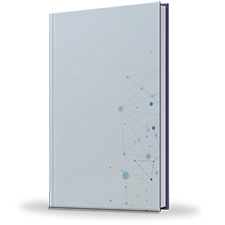Printed batteries are one of the most important components of printed electronics, and they make use of a variety of active materials derived from solution-based inks. Suitable printing techniques, including as stencil, screen, dispenser, and spray printing, as well as dip or blade coating, are used to deposit these inks beneath a substrate. There are different types of printed batteries available in the market. These include disposable and rechargeable batteries. Lithium titanate (LTO) and lithium iron phosphate are two commonly used anode and cathode materials in printed batteries (LFP). Printed batteries are a great alternative to traditional batteries because of their cost-effectiveness, compact construction, flexibility, and portability. Radio-frequency sensing, cosmetic and therapeutic patches, greeting cards sensors, data recording systems, interactive packaging, and other consumer electronics goods all employ them. Printed batteries are environmentally friendly and sustainable, reducing material waste and allowing for speedier production due to less sophisticated fabrication techniques. Rapid acceptance of these batteries has occurred as a result of improvements in the Internet of Things (IoT) and wireless sensor technologies, which is functioning as another important growth-inducing factor.
COVID-19 Impact analysis
- The printed battery market is experiencing declined growth due to reduced manufacturing of goods that utilize these batteries as a result of the COVID-19 epidemic. Furthermore, the COVID-19 epidemic has affected the battery industry's supply chain, making printed batteries difficult to manufacture and distribute.
- The surge in usage of printed flexible batteries in medical equipment to treat COVID-19 patients has aided the printed battery market in recovering some of the losses suffered during the COVID-19 pandemic.
Top Impacting Factors
The rise in number of applications in the electronics business drives the demand for printed batteries. Printing-based cells have a number of advantages over traditional batteries, including lower costs, greater form factor flexibility, and simplicity of production. In addition, it is easier to integrate such batteries into advanced electrical equipment, which promotes the growth of the printed batteries market. Rapid acceptance of these batteries has occurred as a result of improvements in the Internet of Things (IoT) and wireless sensor technologies, which is functioning as another important growth-inducing factor. Furthermore, top electronics businesses are producing printed cells that are compatible with smart devices and have low volumetric expansion, high-rate capability, stability, and security using 3D printing technologies. In the next years, this is projected to drive the market. Finding adequate packaging material for sealing printed batteries is a key hurdle for manufacturers. There are also a number of mechanical limitations and material problems that are impeding the expansion of the printed battery business.
Market Trends
- The Energy Solutions division of NEC Corporation, which was in charge of the company's activities in the battery energy storage industry, is closing down. The COVID-19 outbreak had delayed the attempt to sell the division.
- Photocentric has established a new research division solely dedicated to the creation of environmentally friendly 3D printed batteries. The goal is to develop and mass-produce electric batteries that are lighter and better suited to automotive applications than current options.
- InnovationLab and Evonik have announced a collaboration that will result in the first fully printed, flexible, rechargeable, solid-state batteries for use in printed sensor systems. The two businesses claim that ultra-thin printed batteries, which are more flexible, safer, and ecologically benign than standard metal-based batteries, are opening up new application areas.
Key Benefits of the Report
- This study presents the analytical depiction of the printed batteries’ industry along with the current trends and future estimations to determine the imminent investment pockets.
- The report presents information related to key drivers, restraints, and opportunities along with detailed analysis of the printed batteries market share.
- The current market is quantitatively analyzed to highlight the printed batteries market growth scenario.
- Porter’s five forces analysis illustrates the potency of buyers & suppliers in the market.
- The report provides a detailed printed batteries market analysis based on competitive intensity and how the competition will take shape in coming years
Printed Batteries Market Report Highlights
| Aspects | Details |
| By Components |
|
| By Region |
|
| By Application |
|
| By End use Industry |
|
| Key Market Players | Blue Spark Technologies, Imprint Energy, Inc., Samsung SDI Co., Ltd, NEC Energy Solutions, Xymox Technologis Inc, Solidcore Systems, Inc., Enfucell Oy, BrightVolt Inc, Cymbet Corporation, Planar Energy Devices Inc. |
Loading Table Of Content...



